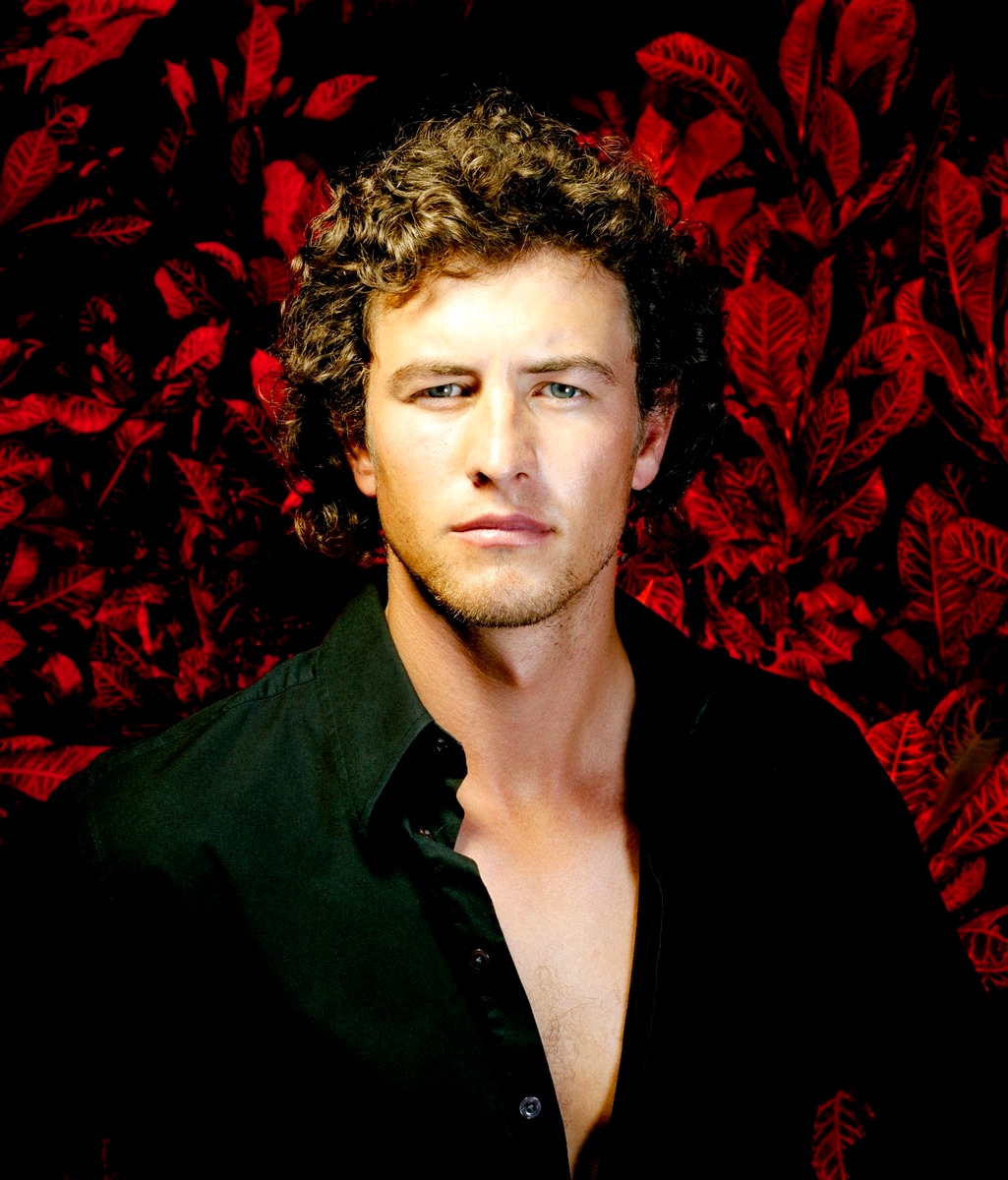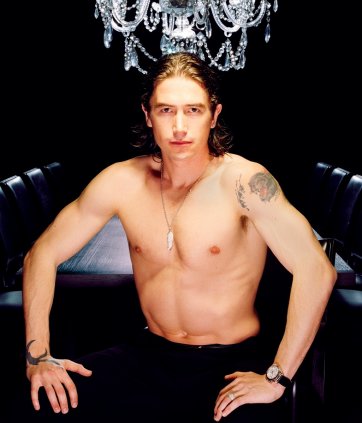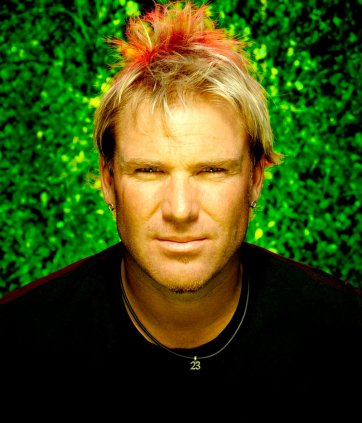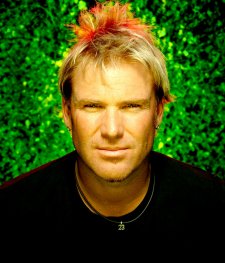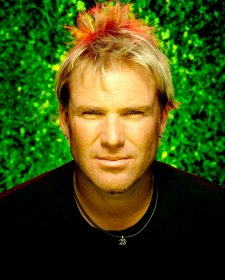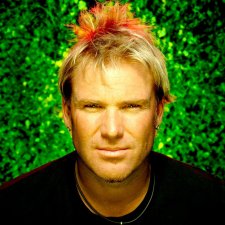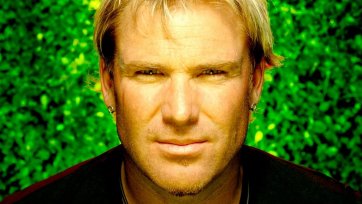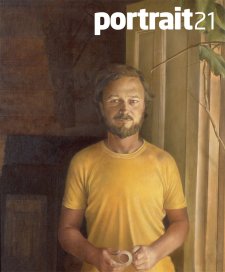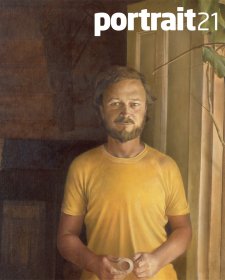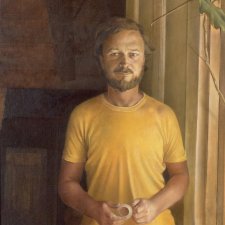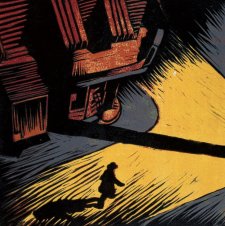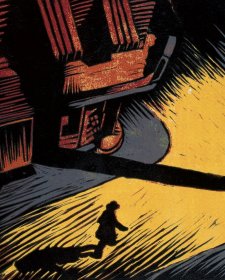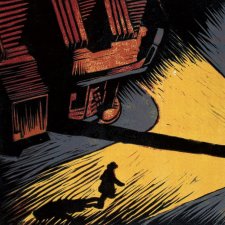The Gallery recently extended its collection of portraits of contemporary athletes with the acquisition of Robin Sellick's photographic series from the exhibition Flash: Australian Athletes in Focus.
Sellick is well known for his sassy and vociferous portraits of Australian celebrities, a style he appositely employs in this series. The new acquisitions are of Australian male sporting greats and include World Cup Socceroo darling Harry Kewell, golf’s rising star Adam Scott, cricket’s ‘bad boy’ Shane Warne, Australia’s foremost Formula One driver Mark Webber, and tennis’s long time leading man John Newcombe.
The focus on recognisable and highly successful male athletes is fundamental to the series. Sellick uses this collective as a means to highlight the contemporary Australian psyche, particularly our obsession with sport, and by extension, the sportsperson. The artist muses on what this national fascination tells us about Australian culture and speaks of possible future corollaries.
‘As the ancient civilisations adorned their cities with statues, will we someday post giant billboards, displaying heroic portraits of our sporting elite, through the Australian landscape? But what do we really know about the character of these highly-glorified individuals? And do we really care as long as they keep making it to the winner’s circle, thus giving us our fix of vicarious achievement?’
As a means to examine this phenomenon, Sellick disassociates his subjects from their specific sports and connects them with personal or congenial locales. He endeavours to capture the athletes’ characters devoid of their sporting trappings, presenting these sportsmen as men, as everyday people with extraordinary abilities. However, Sellick does not necessarily want to make this depiction of the athletes ‘at home’ a straightforward one. He purposefully imbues the chosen settings with ambiguity, offering the viewer alternative readings of the selected locations and in turn creating more complex understandings of the sitters. Over the past two years Sellick has increasingly employed intense single colours to backlight his portraits. This is one effect used to create ambiguous readings in two portraits from this series. Shane Warne is presented in his backyard tennis court. Comprising the entire background of the portrait, the colour of the grassed court has been brightened and intensified to such an extent that the setting can be easily read as a nightclub or pertaining to another shady locale. A further lighting embellishment – the red illumination on the crown of Warne’s hair – promotes this possibility. The expression captured by Sellick plays with this construct, also built by media coverage about Warne’s past transgressions, as we see the cricketer looking directly at the viewer with a piercing, slightly discomforting gaze. Similarly, the portrait of Adam Scott is taken in an outdoor location familiar to the athlete. The image has been taken on a Gold Coast golf course but given Scott’s pinup-quality good looks and the portrait’s backdrop of lit foliage, generally read as ornate swanky wallpaper, the persona portrayed seems more suggestive of a film star than a golf player. Although it is a straightforward and in many ways uncomplicated image, Sellick makes his audience question their recognition of the sitter and achieves his aim of causing the viewer to look at the athlete in an atypical manner.
Another portrait in the series presents a bare-chested Harry Kewell with his hair slicked back, adorned with tattoos and assorted ‘bling’ and sitting in his dining room. The ornateness of this representation seems, at first, out of character with the Harry Kewell the public ‘knew’ at the World Cup. Yet, as the portrait is set within the soccer player’s home in Cheshire, UK, and presents Kewell with adornment of choice, this provides an intimate insight into his lifestyle and personality. The portraits of John Newcombe and Mark Webber also show the individual athlete within a setting far removed from his area of achievement.
A smiling John Newcombe shares his limelightwith Kenobi, his beloved Staffordshire-Cattle Dog cross, while Formula One driver Mark Webber is not easily recognisable without his crash helmet and full skins. As a further distraction, Sellick has decided to make a feature of the yellow billiard table on which Webber sits in jeans and a non descript jumper. With each portrait in this new series, Sellick effectively makes his audience do a double take. He encourages his viewers to re-evaluate their approach to images of these individuals by depleting the portraits of all expected references and in some cases skewing preconceptions. Sellick coaxes viewers to entertain a more complex consideration of our athletes, and by implication, asks them to think about their approach toward sport and the persona of the celebrity sportsman.
